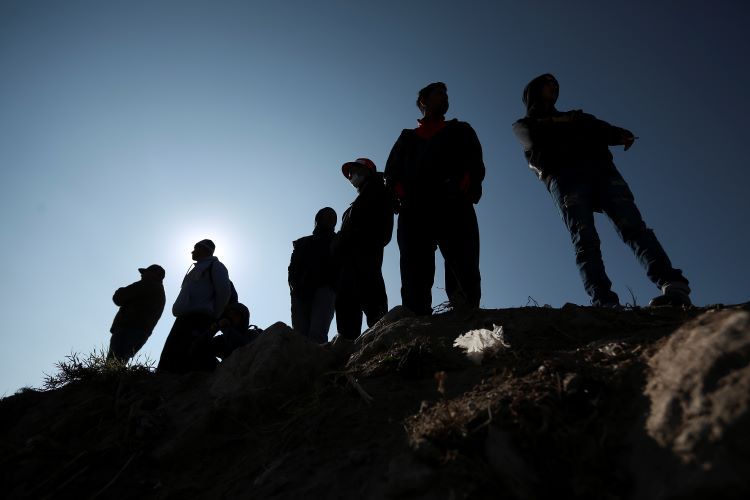Why did Gorsuch join liberal justices who wanted to lift Trump-era Title 42 immigration policy?

Migrants stand near the U.S.-Mexico border in Ciudad Juarez, Mexico, on Dec. 19. COVID-19 pandemic-era immigration restrictions in the United States known as Title 42 were set to expire Dec. 21. Photo by Christian Chavez/The Associated Press.
Four justices dissented when the U.S. Supreme Court issued a Dec. 27 order that keeps in place a Trump-era immigration policy pending further litigation by 19 Republican-led states.
The dissenters were the high court’s three liberal justices and one conservative justice—Justice Neil Gorsuch. His dissent was joined by Justice Ketanji Brown Jackson but not by the court’s two other liberal justices, Justice Sonia Sotomayor and Justice Elena Kagan.
Gorsuch’s dissent is likely based on his consistent opposition to government measures designed to stop the spread of COVID-19, according to Bloomberg Law.
The policy before the Supreme Court is based on Title 42, which is part of the Public Health Service Act of 1944. The law allows the Centers for Disease Control and Prevention to ban immigrants from entering the United States if needed to help prevent the spread of disease.
The Trump administration had cited Title 42 when it adopted a policy that quickly expelled asylum-seekers on the ground that they could contribute to the spread of COVID-19.
A federal judge in Washington, D.C., had ruled in November that the Title 42 policy was arbitrary and capricious and blocked its use. Nineteen Republican-led states sought to intervene and appeal the judge’s decision, but the U.S. Court of Appeals for the District of Columbia Circuit ruled against their intervention bid.
The Supreme Court majority kept the COVID-19 policy in place and agreed to decide whether the states could intervene.
Gorsuch said the Title 42 emergency decrees “have outlived their shelf life.” Even if the Supreme Court was to decide that the states could intervene, and even if the states managed on remand to establish that the Title 42 orders were lawfully adopted, “the emergency on which those orders were premised has long since lapsed,” Gorsuch said.
Gorsuch said “the only plausible reason” that he could discern for stepping into the dispute at this stage was because of the states’ contention that they will “face an immigration crisis at the border” if asylum-seekers are once again admitted while their cases are pending.
“Even the federal government acknowledges ‘that the end of the Title 42 orders will likely have disruptive consequences,’” Gorsuch said.
“But the current border crisis is not a COVID crisis. And courts should not be in the business of perpetuating administrative edicts designed for one emergency only because elected officials have failed to address a different emergency,” Gorsuch wrote.
Bloomberg Law spoke with Josh Blackman, a professor at the South Texas College of Law in Houston, about Gorsuch’s vote.
“Gorsuch has been hostile to every single COVID lockdown measure since 2020. Every single one, and this is simply an extension of his hostility to that,” Blackman told the publication.
According to Bloomberg Law, some court observers think that Gorsuch’s dissent could indicate that he will agree with states challenging the Biden administration’s student debt-relief program. The administration is relying on a federal law that allows waiver of student-aid program rules in times of war or national emergency.
The Biden administration concluded that the government could offer student-debt relief because of the COVID-19 pandemic. Arguments in that case, Biden v. Nebraska, are scheduled for February.
The Title 42 case is Arizona v. Mayorkas.
SCOTUSblog is among the publications that covered the order and cert grant.



